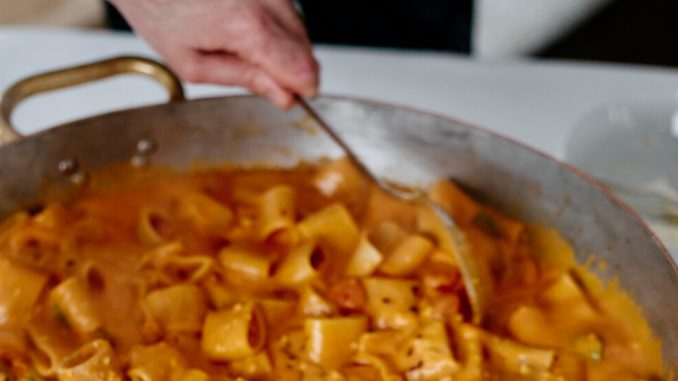
T’s May 19 Travel issue is dedicated to pasta in Italy, diving deep into the culinary traditions, regional variations and complicated history of the country’s national symbol.
I (like you, I’m sure) have friends who don’t eat meat. I also have friends who don’t eat fish. Others don’t eat eggs. Then there are the ones who don’t eat fruit. Vegetables. Gluten. Dairy. Nuts. Sugar. Chiles. Salt. Sugar.
But everyone eats pasta … or tries their hardest to find a decent substitute. And who can blame them? Pasta — any kind of noodle, really, but pasta in particular — is a food so lovable that it feels almost elemental. Most of us can’t remember the first time we ate it, but most of us never want to live without it.
In Italy, however, pasta isn’t just a food — it’s a symbol, synonymous with the very culture. Before the country was unified between 1861 and 1871, Italy was a series of fiefs, but pasta was something they all shared. The north was associated with pasta fresca (“fresh pasta”), made with common wheat; the south with pasta secca (“dried pasta”), made with heartier, more protein-rich durum wheat. Yet that wheat originated not in Italy, notes the T writer at large Ligaya Mishan in her story about the country’s most iconic dish, pasta al pomodoro, but in the Fertile Crescent some 10,000 years ago, before it was “likely brought to Europe by the Arabs who occupied Sicily from the ninth through the 11th centuries.”
In the centuries since, Italy made its bond with pasta indivisible. Every region developed its own shapes (and recipes): trofie, little twists from Liguria, most famously paired with pesto, green beans and rough-cut potatoes; ear-shaped orecchiette from Puglia, served with bitter broccoli rabe and crumbled fennel-flecked sausage; tubelike bucatini from Lazio, tossed with tomato sauce and guanciale. The noodles’ geometries inspire their names; collectively, they make their own hieroglyphic alphabet, a story of generations of meals, as well as a tribute to the endurance of local character. Dawn Davis takes a look at one of those enduring specialties, agnolotti del plin, an envelope-shaped pouch stuffed with meat, eggs, greens and cheese that’s especially popular in the Langhe, an area of southern Piedmont. But travel east to Lombardy, or south to Sardinia, and the filled pastas change — each a testament to a specific culture and environment.
To eat pasta, then, is to write yourself into Italy’s history. But it’s also to surrender to the pleasure of the food itself: a joy that lasts as long as your appetite.


Be the first to comment